It is so easy for a message to be misinterpreted; but then the error can carry on indefinitely. Many years ago, a humorous anecdote circulated after World War II: military orders were often sent via a series of radio relays and each radio operator would listen to a command and then repeat it to the next operator in a series.
One day there was trouble on the front line and an urgent message was sent back to headquarters saying, “Send reinforcements, we are going to advance. However, the message that arrived at the headquarters read: “Send three and four pence, we are going to a dance.” They lost that battle.
Today we have another battle: a battle that’s been ongoing for the past few centuries, and a battle that all serious homeopaths want to see won. And that is to demonstrate the effectiveness and thereby the success of the real kind of homeopathy.
For homeopathy to succeed, we’ve got to get the message of homeopathy correctly interpreted each time it’s exchanged, each time it is passed along by word of mouth, each time it is written down – from generation to generation. Why? Because the founder of homeopathy, a humble physician called Samuel Hahnemann MD, had much success with his original time-honoured message which was a) to prescribe the simillimum, b) to prescribe a single medicine at a time, and c) to prescribe the minimum dose.
And one of these parts of Hahnemann’s message, the part about prescribing one single homeopathic medicine at any one time, is dealt with in this article.
It is obvious that, in order to practice homeopathy per se effectively, we must first apply what is known as the Law of Similars – after all, the word homeopathy means same pathology or similar suffering.
This simple yet profound Law has shown that a medicine capable of producing morbid symptoms in a healthy person may also cure similar symptoms that occur as a manifestation of disease, as has been shown in accidental poisonings and remedy provings in the classical Materia Medicas of homeopathy.
However the only rational way to see if this Law of Similars is true or not is to prescribe those very same medicines as they were proven, i.e. as a single item, irrespective of their ingredients.
For various reasons some of the medical materials in the homeopathic armamentarium are combined before consecutive dilution and succussion. However, these medical materials went through a potentisation procedure simultaneously from their material beginnings and have therefore been proven as one remedy – a single item.
Therefore, if a medicine is proven as a single item of medicine, then it must be also prescribed as a single item of medicine. This is common sense and is the only way to prove that the Law of Similars works and is homeopathy ad pedem litterae.
It is unfortunate for homeopathy that so many practitioners of homeopathy wrongly believe that prescribing a combined mixture of medicinal substances will increase the action and render the prescription more effective.
Even Samuel Hahnemann specified quite firmly in Aphorism 273 (Organon, 6th Edition): “In no case under treatment is it necessary and THEREFORE NOT PERMISSIBLE to administer to a patient more than ONE SINGLE, SIMPLE MEDICINAL substance at one time.
It is inconceivable how the slightest doubt could exist as to whether it was more consistent with nature and more rational to prescribe a SINGLE, SIMPLE medicine at one time in a disease or a mixture of several differently acting drugs. It is absolutely not allowed in homeopathy, the one true, simple and natural art of healing, to give the patient AT ONE TIME two different medicinal substances.”1
Many practitioners mistakenly assume, for example, that because a potentised medicine like Aconitum will produce a particular array of symptoms, and Belladonna will produce another array of symptoms, and Chamomilla will produce yet another array of symptoms, that a combination of Aconitum, Belladonna, and Chamomilla prescribed together, all at one time, will effectively treat all the patient’s symptoms which resemble portions of the proven symptoms of Aconitum, Belladonna and Chamomilla. This is incorrect.
To clarify, the above phrase “prescribed together, all at one time” means that the medicine can either be given in: a) a number of separate carriers, e.g. pills, and placed under the tongue at the same time, b) all the chosen medicines are combined in one material dose e.g. one pill, or c) a single medicine is closely repeated behind the previous single medicine without waiting to see the effects of the preceding medicine. As easy as A.B.C? Not so. Unfortunately, there are many such ‘homeopathic’ combinations like this in wide use at the moment – a mix of potentised medicines cannot honestly be called homeopathic.
It must also be pointed out that a living organism is more than the sum of its parts – a living organism must be treated as a whole unit at any one time. In the same way a potentised medicine can also be seen as a living organism and likewise must be treated as a whole unit and not just a sum of its parts.
If you read the classical Materia Medicas of, for example, Hahnemann, Kent, Clarke, Boericke or Vithoulkas on any one of the abovementioned medicines you will see how far-reaching and profound the proving effects of one single medicine can be.
This is why homeopaths are advised to wait and see the effects on a patient after any single prescription of a potentised medicine. It is only in life-threatening or terminal cases that medicines are prescribed in close sequence, and even here prescribing is according to presenting symptoms.
The image below gives an idea of the careful sequential prescribing of single medicines. To be truly homeopathic, any follow-up medicines are only prescribed when matching symptoms arise.
The highest point on the far right-hand side (1 Aconitum) represents the most prominent presenting symptom(s) to be prescribed upon; the next highest point (2 Belladonna) will appear after the effective action of the first similimum, and so on. Accordingly, if the first remedy acted, then there may be no need to prescribe a second or third medicine.
It is only necessary to prescribe when the next layer of symptoms appear. The safe rule here is to wait and see. The first medicine, if it was homeopathic, may well settle the whole case down and offer a cure. Do not combine medicines as a short cut to cure.
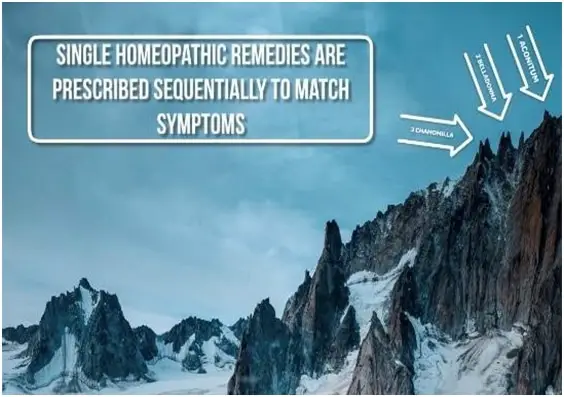
Figure 1 Single homeopathic remedies are prescribed sequentially to match symptoms
But let us examine what happens when a combination/complex medicine is prescribed at any one time, or a selection of medicines are automatically prescribed in very close sequence, irrespective of presenting symptoms:
- Nothing appears to happen and the patient is the same. In this example the practitioner is left in a quandary because they don’t know: a) if the stalemate is because the right medicine wasn’t included in the combination, b) if one of the medicines within the combination mix had a conflicting or suppressive effect on any active medicine, or c) if the whole combination mixture had a worsening effect on the patient’s symptomatology to that anticipated, i.e. a serious suppression or diversion of symptoms. Many classical homeopaths have had a difficult job trying to untangle confused cases that have been assailed with combination medicines.
- The patient becomes worse. In this scenario, the practitioner is in a predicament because they must assume that: a) a wrong medicine was included in the combination and they do not know which one it was, b) an interaction between the medicines might have caused an aggravation but they do not know which medicines were at fault, or c) the potency was too high or too low and caused an aggravation and again they are unsure which medicine was at fault.
- The patient improves. Good news, but the practitioner will not know which medicine in the combination was the effective one. If there is a relapse the practitioner will not know which medicine to re-prescribe.
Again, if all that is needed is an increase in the potency of the effective medicine, the practitioner will not know which medicine had acted. In the case of a relapse where repetition is required, the practitioner may think that a simple repetition of the combination is all that is required – but here again they do not know what might happen between the various medicines should the combination be repeated. There is no scientific proof, no systematic evidence with combination ‘pot-luck’ prescribing.
Thus, it is obvious that if two or more different medicines are taken at the same time, or an unproven combination medicine is taken, a homeopath cannot ascertain which of the medicines has been the active ingredient either positively or negatively (some medicines can antidote one another).
In the above three examples there are far too many variables. Homeopathic medicine will never advance as an exacting and logical scientific method that will pass muster where research and medical principles are concerned with the kind of uncontrolled variable outcomes observed when combination medicines are propagated.
There are too many assumptions and unsystematised results after prescribing combination medicines which could have far-reaching effects in the health of humanity because practitioners do not know what is going on in their patient.
Samuel Hahnemann taught another clear message in Aphorism 274 (Organon, 6th Edition): “As the true physician finds in simple medicines, administered singly and uncombined, all that he can possibly desire (artificial disease-forces which are able by homeopathic power completely to overpower, extinguish, and permanently cure natural diseases), he will, mindful of the wise maxim that “it is wrong to attempt to employ complex means when simple means suffice,” never think of giving as a remedy any but a single, simple medicinal substance; for these reasons also, because even though the simple medicines were THOROUGHLY PROVED with respect to their pure peculiar effects on the unimpaired healthy state of man, it is yet impossible to foresee HOW two and more medicinal substances might, when compounded, hinder and alter each other’s actions on the human body; and because, on the other hand, a simple medicinal substance when used in diseases, the totality of whose symptoms is accurately known, renders efficient aid by itself alone, if it be homeopathically selected; and supposing the worst case to happen, that it was not chosen in strict conformity to similarity of symptoms, and therefore does no good, it is yet so far useful that it promotes our knowledge of therapeutic agents, because, by the new symptoms excited by it in such a case, those symptoms which this medicinal substance had already shown in experiments, on the healthy human body are confirmed, an advantage that is lost by the employment of all compound remedies.”2
Therefore, it is clearly illogical and unscientific for any practitioner to combine medicines in any way whatsoever just because they believe that an accumulation of medicines with similar symptom coverage as published in the provings in any one of the classical Materia Medicas will effect a cure.
“The logic of using only single remedies and thereby eliminating unwanted uncontrolled variables is not unique to Homœopathy, but a necessary part of the application of any rational therapy.”3 Those that practice homeopathy using combination/complex medicines are not approaching the practice of homeopathy scientifically and cannot truthfully call themselves homeopaths.
The excuse has often been made by practitioners of homeopathy over the past forty years or so that these are complicated times we live in with complicated cases requiring complicated treatments, hence the burgeoning eclectic practices of homeopathy.
Thus over time, albeit with good intentions, a whole cornucopia of methods and systems have evolved to manage patients’ cases which unfortunately have attracted widespread ridicule of homeopathy per se from various scientific and academic quarters.
This has hindered the advance of homeopathy. While it may be so that cases have become complicated, it must also be emphasised that now is the time for the art and science of the original effective homeopathy to come into its own. Now is the opportunity for homeopaths to really show how effective homeopathy is by practicing their finely-tuned skills in repertorisation, by referring to the hard-earned knowledge in the classical Materia Medicas, and by applying their understanding of anatomy, physiology and pathology.
Complicated cases require sensitivity as well as careful strategic management to tease out the underlying symptomology of a potentised medicine, much like removing the uppermost picture, one at a time from a confused pile, in order to address the next picture, irrespective of the deeper related pictures that appear.

Figure 2 Prescribing homeopathic remedies sequentially: removing the uppermost picture, one at a time from a confused pile, in order to address the next picture, irrespective of the deeper (related) pictures that appear.
In the rare cases of those fortunate few who belong to a high level of health, say Level 14, it is usual to see only one or two homeopathic remedy pictures appear because the symptoms of a healthy organism speak clearly, so to speak, when the organism is out of harmony with life.
This clarity of symptoms is a common observation with relatively healthy infants and children. It has been recorded by experienced classical homeopaths that when medicines are prescribed singly and sequentially, clarity of symptomotology can appear even in the apparently complicated or confused cases.
To reiterate, in the proving of a single medicine a plethora of symptoms are produced on the mental, emotional and physical levels. This means a single medicine can also re-balance an ill person’s whole dynamic system including symptoms on their mental, emotional and physical levels as well.
Even if the symptoms of the ill person are localized, in effect it is the person’s whole system that has lost equilibrium and is trying to regulate itself through symptoms. So, as a rule, not only physical but also mental and emotional symptoms are taken into consideration when prescribing: they are all evidence of a unified effort to resolve an inner disturbance.
Thus in prescribing homeopathic medicines only one single medicine is taken at a time, followed by observation of its effects on the person’s energy. By waiting and observing you will see the single similimum medicine instigate change.
At the International Academy of Classical Homeopathy in Alonissos, Greece under the tutelage of a master in traditional homeopathy students observe live cases that have been introduced by doctors from all over the world for treatment by Professor George Vithoulkas.
Some of these patients have previously been treated with combination medicines and their cases have become confused and many are chronically ill. However, after careful case-taking, repertorising, and sensible sequential prescriptions of single similimum medicines, many of these patients improve or are cured. It is a revelation to observe these confused cases gradually clear, with a strong picture of an underlying medicine appearing.
An example of the effectiveness of using the single homeopathic remedy in sequence is seen in the research article Levels of Health Theory With the Example of a Case of Juvenile Rheumatoid Arthritis by Dr Dmitry Chabanov, Dr Dionysis Tzintzas and Professor George Vithoulkas, published in Sage Journals, Vol 23 on 13 June 2018.5 This research article is recommended reading. Figure 3: Development Of The Disease below is from this article and illustrates the patient’s anamnesis till she was eleven years of age.
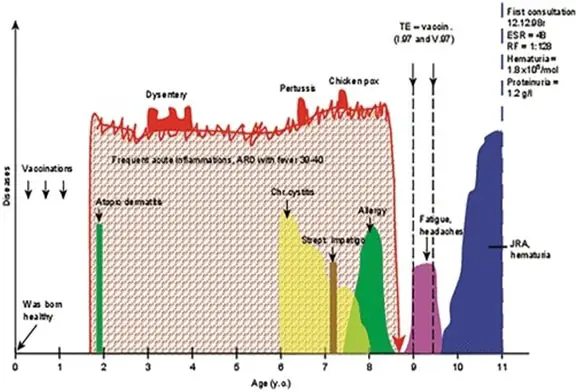
Figure 3 Development Of The Disease (© Dr Dmitry Chabanov)
Now compare Figure 3 with Figure 4 (from the age of 11 till 29):
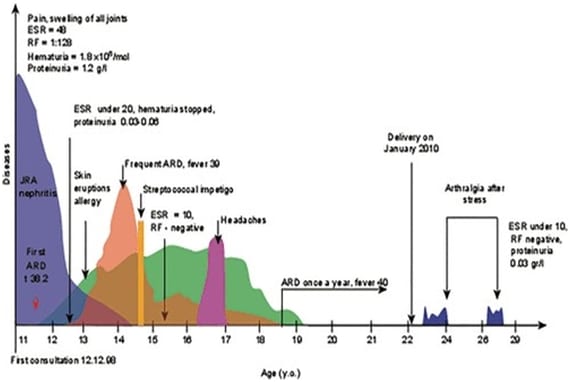
Figure 4 Progress Of The Cure (©Dr Dmitry Chabanov)
“Over the 18 years of treatment, she received Causticum in different potencies, and to complete the cure, she received different potencies of another 2 homeopathic remedies in rotation — Natrum muriaticum and Tuberculinum.
The dynamics of the recovery process with the follow-up history are shown in a compact form …”4 in Figure 4: Progress Of The Cure. Here note the reappearance of earlier suppressed symptoms as the young woman’s health gradually improved; the uppermost presenting symptom pictures were removed one by one by a single simillimum remedy.
“The healing of a severe autoimmune pathology – the generalized form of juvenile rheumatoid arthritis – with the classical homeopathy method supports the efficiency of such a treatment. The long-lasting follow-up, showing no disease signs for 17 years, serves as firm evidence for the force of homeopathic remedies.”6
Many live and recorded cases with similar complexity are presented during summer courses at the International Academy of Classical Homeopathy in Alonissos, Greece. However, the new online course Strategies In Prescribing is highly recommended for advanced traditional homeopaths: fifty-two videos over fifty-six hours record live patient consultations with Professor George Vithoulkas, including unravelling confused cases, sequential prescribing strategies, differential diagnoses, and ways of selecting the correct similimim.7
Every generation of ‘new and improved’ homeopaths has misinterpreted the important message from Hahnemann and translated it according to their own individual ‘modern’ perception.
Thus, homeopathy is in danger of becoming an all-encompassing dance of eclectic methods and systems where there is no wrong way, no right way – in fact, the way of homeopathy per se has almost been lost.
The rigorous scientific observation of applying a single proven potentised medicine to a patient exhibiting similar symptoms has almost become inconsequential. To ensure that this extraordinary medicine which can heal humanity on a deep quantum level does not become completely lost to history, it is essential for homeopaths to interpret the message correctly.
Do not let the erroneous message of combination medicines continue. Send reinforcements: homeopathy will only advance if medicines are prescribed SINGLY AND SEQUENTIALLY.
END
References:
- Hahnemann, Samuel, The Organon (6th Edition) Aphorism 273 https://www.vithoulkas.com/learning–tools/organon/organon–hahnemann
- Hahnemann, Samuel, The Organon (6th Edition) Aphorism 274 https://www.vithoulkas.com/learning–tools/organon/organon–hahnemann
- Dimitriadis, George BSc.(UNSW), DHom.(Syd), DHomMCCH(Eng), MBöAG(Ger), LiRF(HISyd), The
Scientificity of Homeopathy
https://www.vithoulkas.com/writings/other–authors/scientificity–homeopathy–george–dimitriadis
- Vithoulkas, George, International Academy of Classical Homeopathy, Online Course: Levels Of Health
- Chabanov, Dmitry; Tzintzas, Dionysis and Vithoulkas, George, Levels of Health Theory With the Example of a Case of Juvenile Rheumatoid Arthritis, Sage Journals, Vol 23, 13 June 2018.
- Ibid.
- Vithoulkas, George, International Academy of Classical Homeopathy, Online Course: Strategies In Prescribing
Figure 1 Single homeopathic remedies are prescribed sequentially to match symptoms (© Ann Sorrell)
Figure 2 Prescribing homeopathic remedies sequentially – removing the uppermost picture, one at a time from a confused pile, in order to address the next picture, irrespective of the deeper (related) pictures that appear (© Ann Sorrell)
Figure 5 Development Of The Disease (© Dr Dmitry Chabanov)
Figure 6 Progress Of The Cure (© Dr Dmitry Chabanov)
Bio:
Ann Sorrell BA(Hons), IACH, DSH is a classical homeopath and writer. She has had over 40 years’ experience in homeopathy after training formally in Hahnemannian principles in the 1980s. Some of her books are: Homeopathy for Childhood Diseases and Homeopathy for Influenza. Ann is currently studying with Prof. George Vithoulkas at the International Academy of Classical Homeopathy in Alonissos, Greece, and is an advocate of the Academy’s academic E-learning Program of Classical Homeopathy. She is active online in the promotion and education of classical homeopathy. Further details about her books: www.annsorrell.wordpress.com, and for information on the E-Learning Program in Classical Homeopathy: https://elearning.vithoulkas.edu.gr/annsorrell
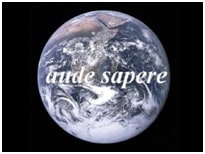





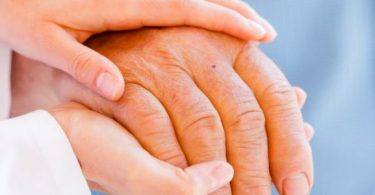
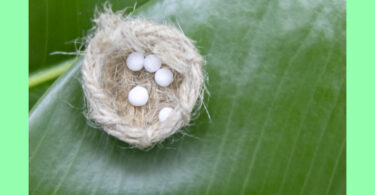
I agree with you entirely. I believe the hardest thing for a person practicing any healing art is to know when to wait. We all want to rush to the suffering person’s aid (only fools rush in…). We must train ourselves to resist that urge. In a true emergency the symptoms are strong and clear. Otherwise we must learn to wait until the portrait develops before we prescribe a first or a subsequent homeopathic remedy on the totality. Sometimes waiting for the totality to emerge takes humility and patience…
If a person comes to us for help it is because they trust in our expertise. I believe that expertise also means to know when to wait and to know when to act. If we are not confident in our own prescriptions, how can the patient be confident that his/her confidence has been well placed?
You gave a complete and detailed literature review. Thank you for your thoroughness. Your attention to detail will not be forgotten!
west bengal india there is small city nihati,homeopath ak bhatacharya family authors of tridosha and homeopathy,septenate mixutures, practical homeopathy.long back i was lucky to visit nihati two three times.mixtures should not be discarded in one stroke,fo research this family has vital documentation.
article grandma baryta carb and her grandson baryta carb by frederica e gladwin is hidden treasure.placid muscle swelling like of face eyes like chinese expression,behind caucasian race,research required baryta will be in news .kent clarifies it is lymphatic infiltration visible in inflammed tonsils and neck knots.baryta most sensitive to odors.baryta carboveg carbo ani natmur grasp forhead as if pressed down.cracking sound in ears when chewing.let us create world peace by baryta carb.
sunirmal sarkar highly reputed indian homeopath says using one remedy and one dose in pathological cases not efficacious,printed in just you see pdf.prostate cancer flutamide 30c is their clinical experience,chilliness brown spots on skin early morning stool.reading as layman chilly is low vital force discharged battery brown spots liver on verge of breakdown cobaltum type morning stool paralytic intestines early signs serious body default,we should make public wise consult qualified homeopath.